What Animals Live In South America?
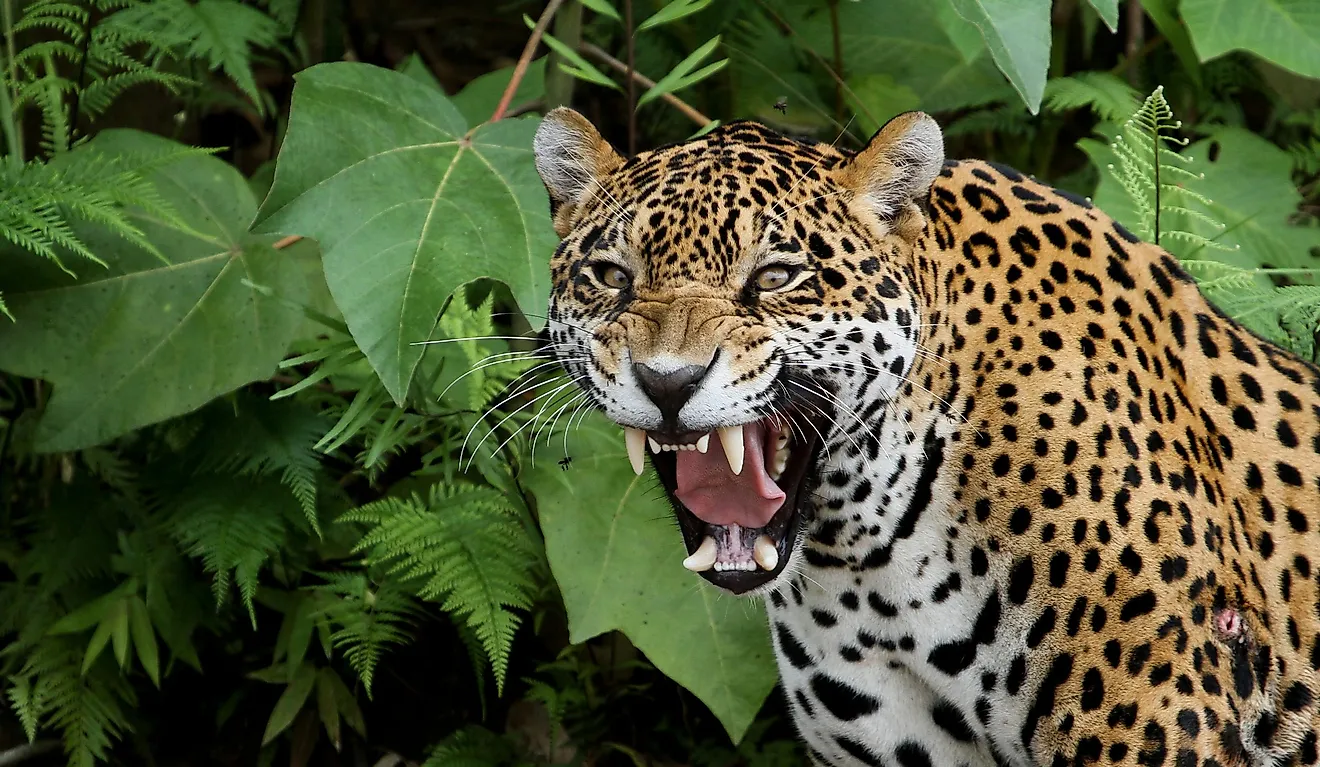
- Known for their razor-sharp teeth, scary bite, and penchant for flesh, the piranha is believed to have inhabited the fresh waters of South America for millions of years.
- The capybara is the largest rodent in the world. It is native to South America and can grow up to around 2 feet tall and 4 feet long.
- The largest of all anteater species, the giant anteater found in South America can grow to about the size of a golden retriever.
- Capybaras have a very intricate language of purrs, barks, whistles and squeals to communicate with each other.
- Jaguars can be melanistic, so their fur will appear all black. When that is the case, they are actually called black panthers.
South America is home to a vast array of species endemic to the region. From giant reptiles to carnivorous fish, this side of the world has plenty of one-of-a-kind fauna to keep biologists mesmerized. Many of these can’t be found elsewhere and are specially adapted to the hot and humid climate in the region.
Some of them are very iconic and well known (with movies made about them, even!), while others remain rare and unknown to some people. Here are ten of the most fascinating animals you’ll find in South America.
Anaconda
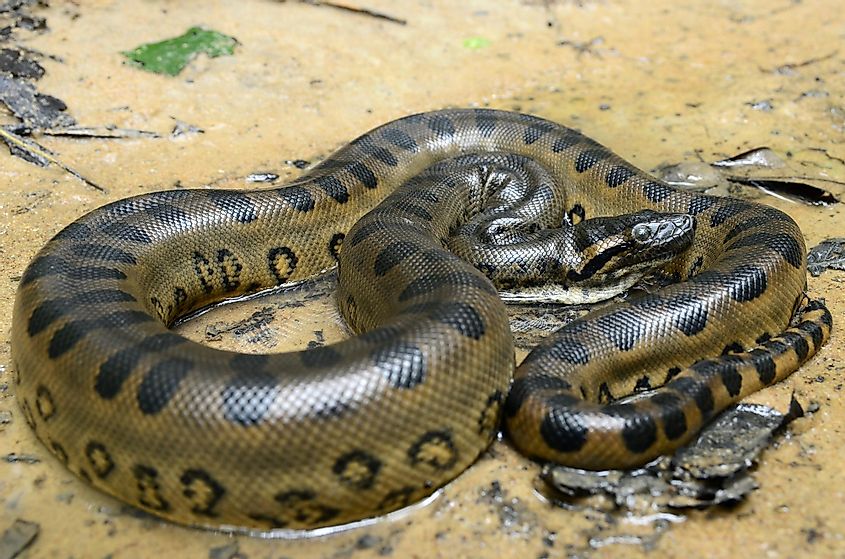
The star of not one but many Hollywood films, this mammoth snake is found in South America. They are also known as water boas and are considered the heaviest snake in the world. They can grow to nearly the length of a school bus at 30 feet (9.15 m). Some can weigh up to 550 pounds (250 kg).
They aren’t venomous snakes but they are constrictors. They wrap their bodies tight around their prey to break the bones and kill them. They can sense when their prey’s heart has already stopped and only then will they loosen their grip and start to swallow the prey…whole.
Anacondas thrive in water and live in swamps, marshes, and other bodies of water with slow-moving streams.
Capybara
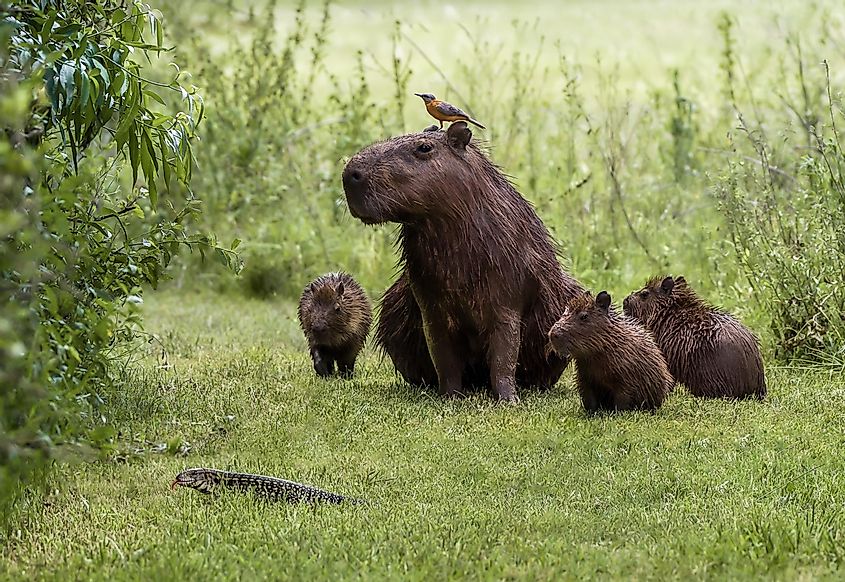
The capybara is the largest rodent in the world. It is native to South America and can grow up to around 2 feet (0.6 m) tall and 4 feet (1.2 m) long. They look like a cross between a giant guinea pig and a pig without a snout. They are covered all over with brown shaggy fur and have a face that resembles that of a beaver’s.
They live along the riverbanks and depend on water plants for sustenance. To hide from predators, they can stay underwater for up to five minutes at a time. They have slightly webbed feet that help them swim.
Piranha
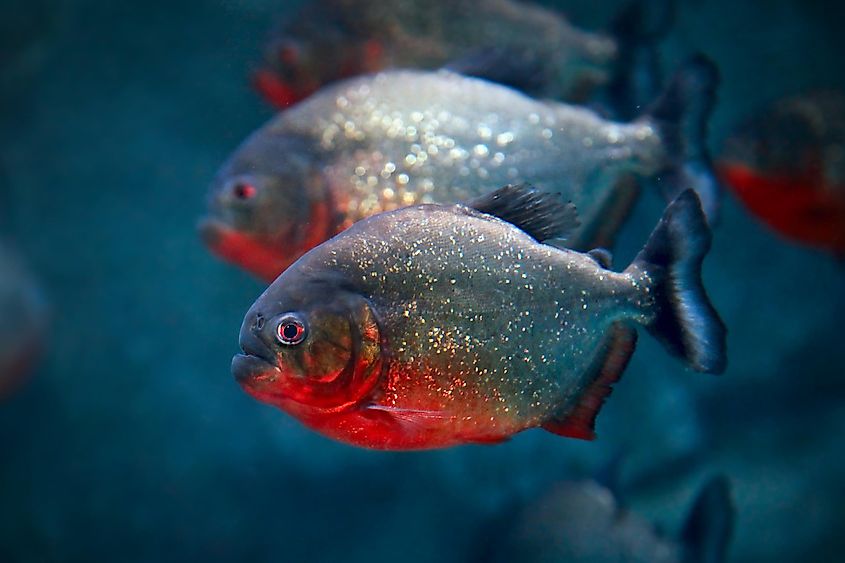
Known for their razor-sharp teeth, scary bite, and penchant for flesh, the piranha is believed to have inhabited the fresh waters of South America for millions of years. But what many people don’t know or don’t see in movies is that some species of piranhas are actually vegetarian.
Some of them eat river weeds, while others prefer seeds. The piranha known around the world is the most ferocious among the 20 species, called the red-bellied piranha (Pigocentrus naterreri). These predatory fish that live in the Amazon eat other fish, molluscs, and crustaceans. They hunt in schools and are known to also attack small mammals.
Jaguar
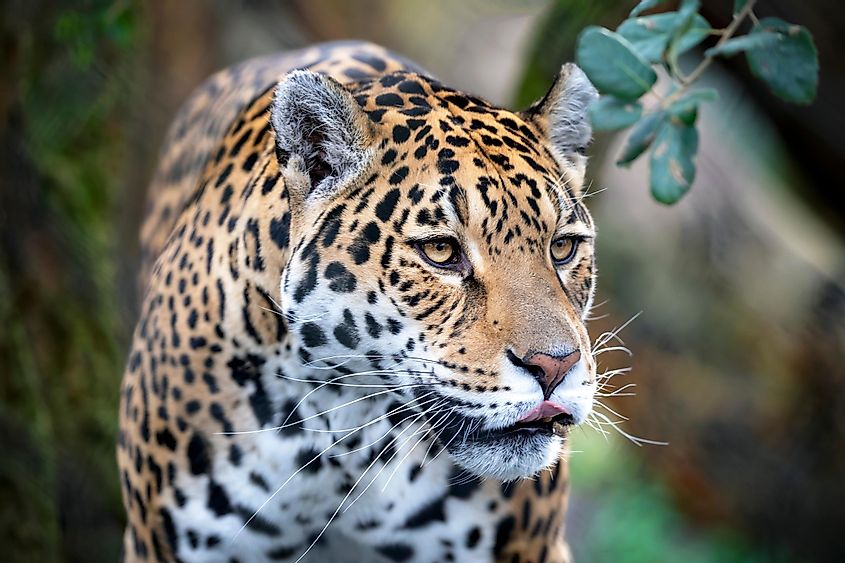
This majestic feline is the third largest cat in the world. The word jaguar came from the Tupi and Guarani language which means “true, fierce beast.” They can grow up to 8 feet long (2.4 m) from the nose to the tip of the tail and can weigh up to 300 pounds (136 kg).
They might resemble leopards, but jaguars have shorter limbs and larger paws. They also generally have stockier bodies, and their rosette patterns on their fur have an extra spot in the middle that leopards do not have. Jaguars live in thick tropical forests, coastal mangroves, swamps, lowland river valleys, grasslands, and scrublands. They prey on small and medium-sized animals and are known to pierce the prey’s skull with their sharp canines.
Sloth
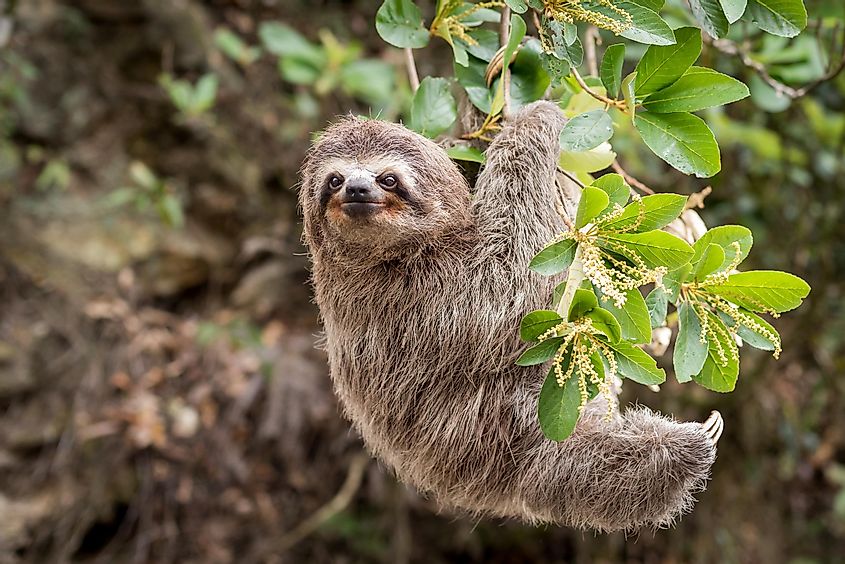
Sloths are known for their slow movements due mainly to their slow metabolic rate. They also love snoozing and often spend 15 hours everyday sleeping atop trees. These tree-dwelling mammals feed on buds, leaves, or twigs and they can survive with very little food.
What many do not know is that sloths can swim and are known to occasionally get down from the trees and take a dip in the water. They use their long arms to propel themselves while swimming.
Giant Anteater
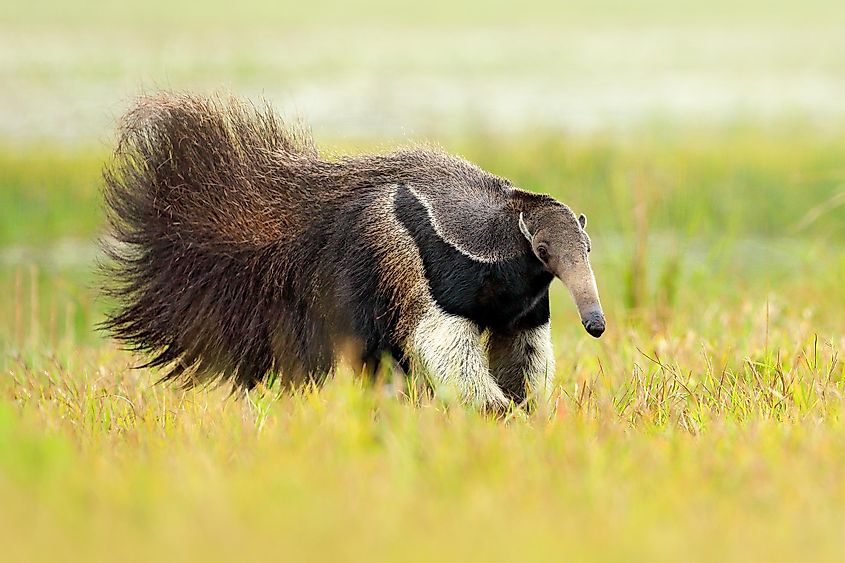
The largest of all anteater species, the giant anteater can grow to about the size of a golden retriever, although they may appear even larger because of their thick gray fur. Its perfectly adapted elongated head and long nose are adept at scooping insects from inside an anthill or termite mound.
They have thin and extremely long, stick-like tongues and sticky saliva that they use to scoop up tiny insects, and this is their only source of food as they have no teeth. Giant anteaters have sharp claws that help them dig through anthills or defend themselves against predators. They live in the grasslands and rainforests of South and Central America.
Peruvian Hairless Dog
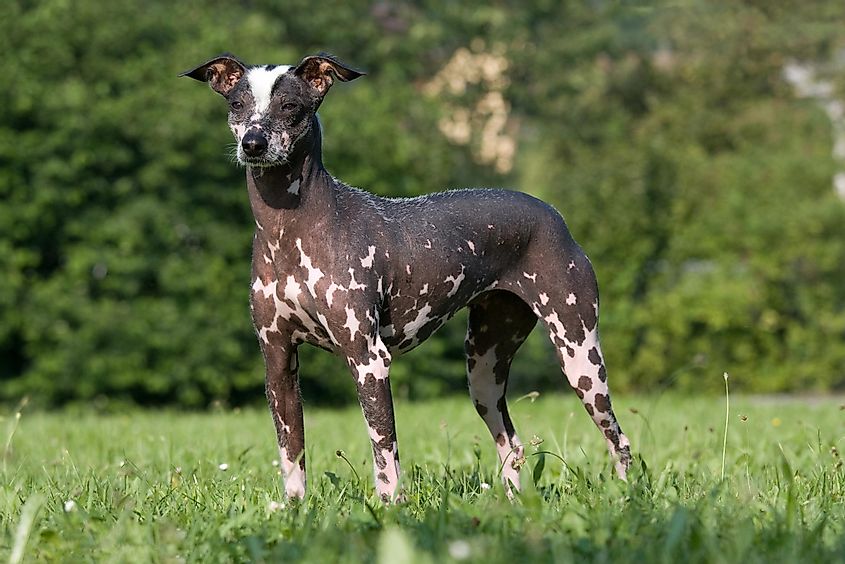
This peculiar-looking canine is believed to have come from Peru long before documented history. Also called Peruvian Inca Orchids, these hairless dogs were almost extinct only 20 years ago, but a renewal in interest by Peruvians in these historic dogs has brought their numbers back up to non-endangered status.
Because of the absence of a protective coat, they are prone to skin issues like sunburn, rashes, skin allergies, and lesions after trauma. The ancient Peruvian tribespeople treated them as companions as shown in some pottery depictions. Some of the latter even show these animals wearing some form of clothing.
Mountain Tapir
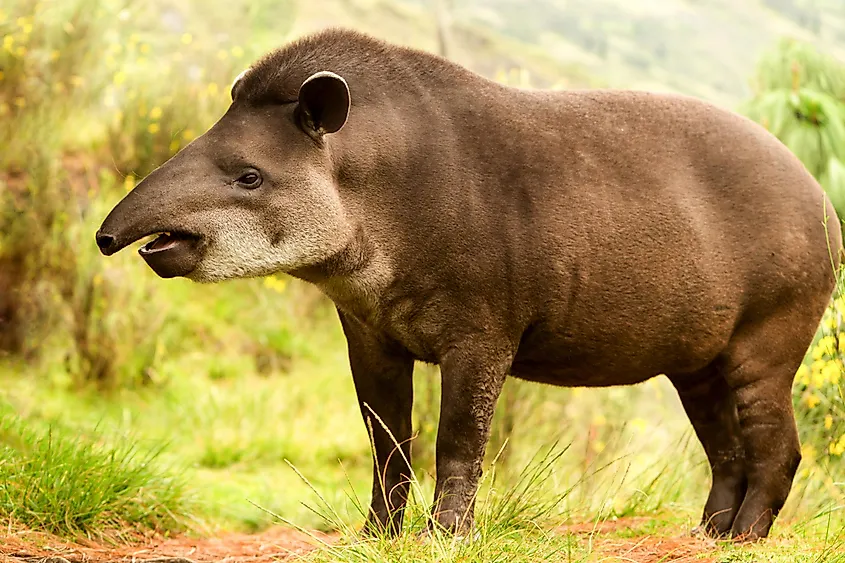
Found in Colombia, Ecuador, and northern Peru, these animals have been around longer than humans. Scientists believe that their ancestors lived over 35 million years ago. Although they might resemble a pig or a bear, they are more closely related to a rhino or a horse. They live in forests or tree-less plateaus. They can also be found in wet tropical forests and maintain a herbivorous diet of grass and seeds.
Tapirs can be shy and thus are difficult to spot in the wild. They scurry away when disturbed by humans. They are also good swimmers and can stay underwater for several minutes.
Toco Toucan
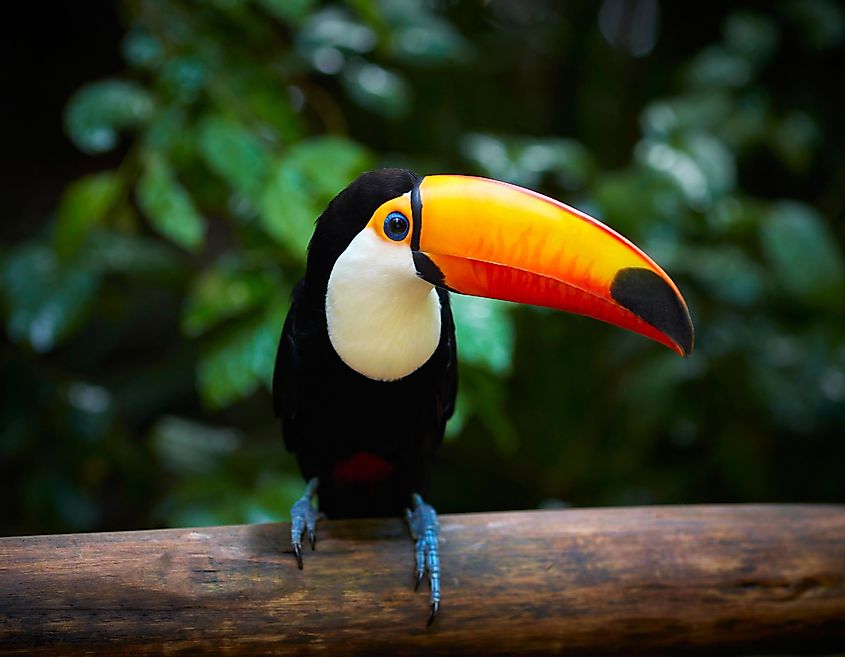
Among the most mesmerizing birds you can find, the toco toucan lives in the tropical forests of South America. They're known for their oversized bills that are hard to miss. Their bills can grow up to 9 inches (23 cm) long and may seem heavy from the point of view of onlookers. But they are hollow inside.
These beautiful birds are also known for the striking blue eyes, which is actually just skin around their eye socket. They live in different types of habitats including open wooden gardens, savannas, woodlands, and plantations.
Llama
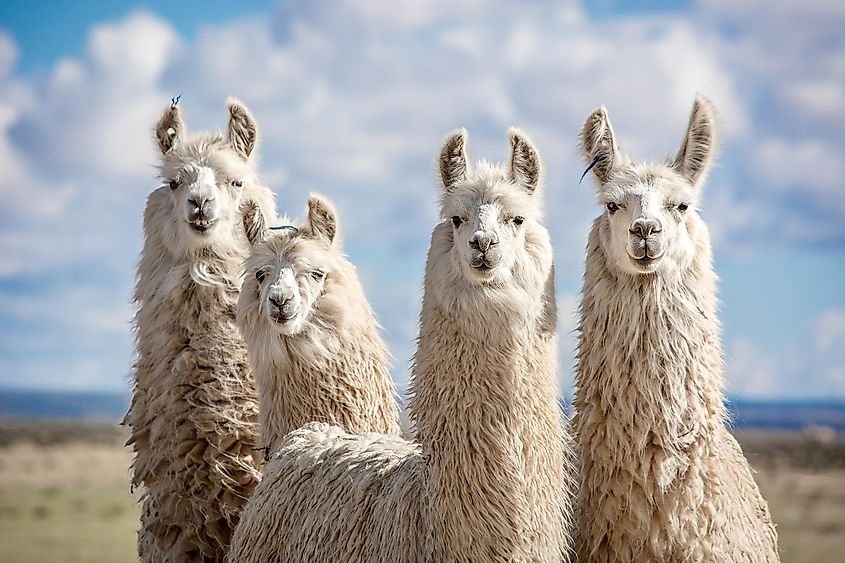
Llamas are an icon of the Andes Mountains and herded packs of them can be found in Peru, Chile, Ecuador, Bolivia and Argentina. Indigenous peoples in these countries have used llamas as pack animals for centuries. Llamas are gentle creatures but are known to hiss, spit or refuse to move if mistreated or overworked.
These animals feed on grass, regurgitating and chewing on cud similarly to cows. They also require little water, making them ideal pack animals in the mountainous regions of South America.











